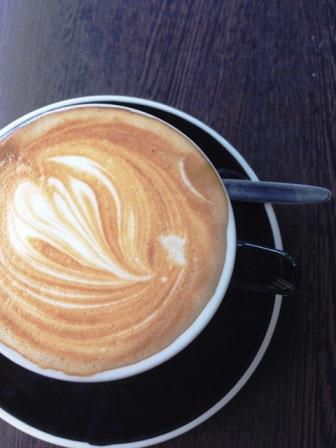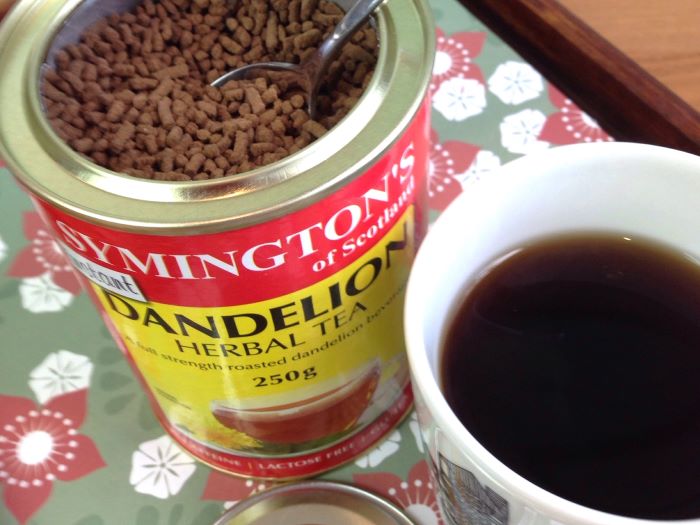- Home
- Blog
- Energy Boosters
- What coffee is that?
What coffee is that?
Written by Catherine Saxelby
on Wednesday, 30 September 2015.
Tagged: caffeine, coffee, energy

Coffee - the drink with history, flavour and attitude. It’s the great social beverage that is accessible in a variety of ways all around the world. From espressos to lattes, I find it fascinating to find out how the various kinds of coffee are made and what makes them taste so different.
Here’s a run down on all those fancy coffee types and how much actual coffee compared to milk you’re getting. Handy when you’re trying to cut back on caffeine and wondering which coffee gives the least jolt:
BLACK COFFEES
Espresso (often called short black in Australia)
A strong brew of a shot (about 30ml) of espresso extracted in around 30 seconds and served in a small cup. A well-made espresso is characterised by a dark, golden fine-bubbled crema and a smooth aftertaste. Always drunk black, this is the favourite of coffee lovers the world over. I think of it as the simplest form of coffee being just coffee and water. The coffee is produced by forcing near-boiling water through ground coffee under pressure. An espresso shot is the basis of all other coffees. Generally a shot gives you 30ml (1oz) of espresso, but some baristas like to be more generous with 45ml (1/1/2 oz).
Long Black (Americano)
A long black is an espresso shot pulled on top of a cup of boiling water.
Lungo
An extra long extraction that allows somewhere around twice as much water as normal to pass through the ground coffee, usually used for a single shot of espresso.
Ristretto
Meaning ‘restricted’ in Italian, a ristretto is normally only the first 15mls of extraction and is therefore ‘restricted’ in the amount of coffee extracted to better capture the sweetest, most intense characters of the coffee. The term ‘Double Ristretto’ means capturing 30 ml of espresso, made up from two 15 ml shots. Heck it’s strong!
MILKY COFFEES
Cappuccino
The most popular way to drink coffee in Australia, this is made from one-third espresso, one-third steamed milk and topped with one-third thick frothed milk. Then its glam to finish it off with a sprinkle of chocolate on top. It was named after the 'Capuchin' monk's white and brown long flowing hood.
Caffè Latte
A shot of espresso with three times the volume of creamy, steamed milk. This looks so nice as it’s usually served in a tall, thick glass that the barista wraps a serviette around so you can pick it up.

Flat white
Very similar to the latte and popular in Australia and New Zealand, where incidentally I love the coffee. Better than in Rome methinks, thanks to the waves of Italian migrants who settled here after World War 2. This is ideal for those who enjoy the strength of the latte but not the foam that goes with it (and I’m one of them). Like a latte, the drink is prepared from one shot of espresso and steamed hot milk. There’s little difference between the two. Some say a flat white has less milk than a latte and usually a less foamy head on top. Others say they have the same texture, but one is in a cup, the other in a glass.
Macchiato
A shot of espresso coffee with just a dash of milk added. It comes from the Italian word macchiato which means “to stain or spot”. A macchiato is stained with milk, meaning that it only has a dash of frothed milk. It’s for the coffee lover who wants a strong espresso but with a little something to take away the edge or slightly soften the espresso. Traditionally it’s served in a demitasse glass.
Others
Affogato
A tall glass filled with ice cream then a double shot of espresso poured over and topped with cream and shaved chocolate. Flavoured syrups such as caramel, vanilla or hazelnut can be added. Or a nip of liqueur such as Tia Maria or Bailey’s.
Piccolo
A newish foodie trend at the edgy cafes. Piccolo means small and this baby coffee appeals to someone who doesn’t want a huge volume of liquid. It’s a double shot of espresso and topped up with steamed milk to the rim of the cup and froth served in a small macchiato glass.
Mocha
A hot drink that’s equal portions of espresso, hot chocolate and frothed milk, this is sweeter but not as intense in coffee flavour. I find it’s a transition drink from teen sweetness to full-strength coffee. Socially acceptable to have if you’re trying to cut back on caffeine.
Frappé
Think of a big cold milkshake made from coffee and you’ve got the frappé. Popular in coffee chains where it’s sold in huge buckets and adds heaps of kilojoules (Calories). Mix coffee with sugar, ice and/or ice cream, milk and whirl it until thick and foamy. Often served with a flourish of whipped cream – more kilojoules/Calories! and served in a long glass.
Vienna
A double pour of espresso served in a tall glass, topped with a big swirl of whipped cream and dusted with chocolate powder - no good for the waistline.
Decaf
Decaffeinated coffee is made by removing the caffeine from green beans before roasting and is used in either black or white coffees. One method uses a well-tested solvent methylene chloride but then the problem arises of how to remove all traces of the solvent. Another method is to use water to dissolve out the caffeine but it’s more expensive. Whichever method is used, there is some loss of flavour and aroma. If you drink a milky coffee, it’s probably still pleasant but coffee aficionados will not find it to their taste.
Coffee substitutes
Coffee substitutes are useful for people who are affected by caffeine’s over-stimulating effects. They are made from roasted, malted grains like barley, wheat or rye or from roasted chicory or root vegetables (dandelion, beetroots or carrot) with molasses or maltodextrin.

The roasted ingredients are steeped and the liquor separated and concentrated under vacuum before drying. Some coffee substitutes are high in fibre. If you like your coffee weak with milk, I think you’ll find these fine but not if you’re a lover of espresso. Examples are dandelion tea (also called dandelion coffee), Caro, Ecco, Cafix and Pero.
Coffee and caffeine
Coffee contains caffeine, a mild stimulant that helps boost alertness and overcome fatigue. It occurs naturally in coffee, tea, cocoa and cola drinks.
Caffeine affects people in different ways depending on the way it is drunk, as well as body size and tolerance level. Too much caffeine can cause headaches, insomnia and stomach irritation.
Foodwatch
The Good Stuff
The Boring Stuff
© 2025 Foodwatch Australia. All rights reserved
Website by Joomstore eCommerce





